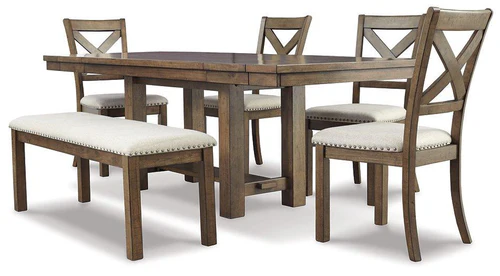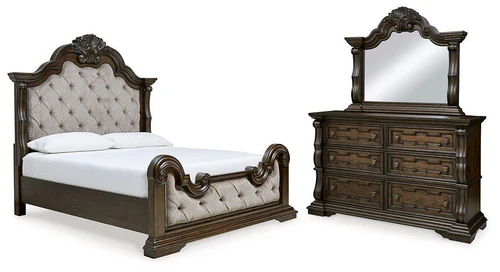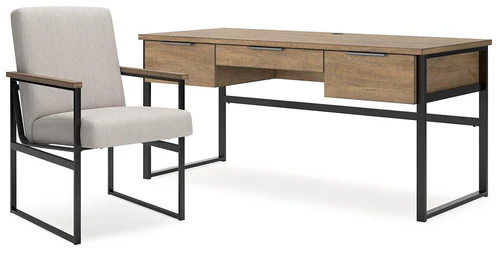Struggling to choose the perfect furniture sets for every room? This guide will help you understand how to choose the perfect furniture sets for every room, select pieces that fit, enhance functionality, and match your style in every room of your home.
Key Takeaways
-
Understand the dimensions and purpose of each room before selecting furniture to ensure comfort and functionality.
-
Mixing styles can create a dynamic living space, but maintaining visual balance through consistent color palettes is key.
-
Opt for multifunctional and compact furniture to maximize space, especially in smaller areas, ensuring practicality without sacrificing style.
Understanding Your Space and Needs

Before selecting furniture, understand the dimensions and unique features of your space. Measure room dimensions, including doors, windows, and architectural features, to ensure the furniture fits perfectly without overcrowding. For instance, a sofa that’s too large can dominate a small living room, while a tiny coffee table might look out of place in a spacious area.
Furniture that complements the room’s dimensions helps avoid a cramped environment. Logical furniture arrangement maintains an open and inviting space. Consider how people will move through the space and arrange your furniture to enhance this flow. For example, placing a couch in a way that blocks a pathway can make the room feel awkward and difficult to navigate.
Consider the purpose of each room and how it aligns with your lifestyle. Whether it’s a cozy reading nook or a bustling family room, furniture should enhance enjoyment and functionality. Prioritize comfort and practicality to ensure your home decor meets everyday needs while reflecting your personal style.
Choosing Living Room Furniture Sets

Durability and proportionality are key when choosing living room furniture. High-quality materials ensure longevity and better value. The size of your furniture should be proportional to the room to maintain a balanced aesthetic and functionality. This is where mixing and matching styles can come into play to create a personalized and visually appealing space.
Unifying elements in existing decor can tie together diverse furniture styles. For instance, a modern sofa paired with a vintage coffee table can create a cohesive look with a consistent color palette or repeated design motifs.
Focal Point Arrangement
Identify the focal point of the room, such as a fireplace, television, or large piece of art. Position key seating pieces like sofas and chairs around this focal point to create a balanced and inviting layout. Pairing chairs with sofas can help balance the visual weight and create conversation areas that are both functional and aesthetically pleasing.
Choose a rug that complements your furnishings and be mindful of colors to unify the space while ensuring proper TV viewing angles. This arrangement maximizes space and enhances overall comfort and usability.
Mixing and Matching Sofas and Chairs
Mixing different sofa styles can add a dynamic and inviting feel. For instance, combining two sofas, a sleek modern sofa with a cozy slipcover sofa, can enhance aesthetics and offer varied seating options. Adding accent chairs further complements this arrangement, providing additional seating and visual interest.
This mix-and-match approach offers greater design flexibility and improves living room functionality. Blending different pieces can create a space that feels both cohesive and unique, whether you prefer an eclectic style or a unified look.
Selecting the Right Coffee Table
The coffee table often serves as the living room’s centerpiece, both functional and decorative. Investing in coffee tables with storage can enhance utility in limited spaces. For instance, a coffee table with drawers or shelves helps keep clutter at bay while providing a stylish focal point.
Matching the visual weight of your coffee table with other matching furniture is important. For example, pairing a chunky coffee table with an overstuffed couch creates a balanced and harmonious look. This careful selection ensures your living room remains both functional and aesthetically pleasing.
Dining Room Furniture Selection

The dining room is another crucial area where the right furniture enhances both style and functionality in interior design. Incorporating materials like wood, metal, and fabric adds visual interest and creates a dynamic space.
This blend of materials can bring warmth and character to your dining room, making it a place where people love to gather.
Optimal Dining Table Shape
Choosing the right dining table shape optimizes your dining room’s dimensions and ensures a comfortable dining experience. For larger dining rooms, avoid oversized tables and select ones based on actual seating needs. Rectangular tables are ideal for rectangular dining rooms, maximizing space and providing ample seating.
In tighter spaces, circular tables with pedestal bases allow for better flow and access around the table. This design saves space and creates an intimate dining setting perfect for smaller gatherings.
Balancing Dining Chairs and Storage
Balancing dining chairs and storage is crucial for a functional and comfortable dining room. Ensure at least 6 inches of space between chairs for comfortable movement and a depth of 15 inches per place setting to accommodate dining needs. Maintaining a minimum of 36 inches of clearance around the dining table ensures ease of access and comfort.
Incorporating storage options like wall shelves and cabinets enhances organization and reduces clutter. These solutions provide practical storage and add to the room’s overall aesthetic.
Lighting Considerations
Lighting plays a significant role in creating an inviting dining atmosphere. Adjustable chandeliers improve the dining experience by allowing height changes based on the event. Positioning dining room furniture near windows maximizes natural light, creating a bright and welcoming space.
In addition to natural light, using floor lamps and chandeliers enhances the ambiance and functionality of the dining area. This combination of lighting options ensures your dining room is well-lit and inviting at any time of day.
Bedroom Furniture Sets

The bedroom is a sanctuary, and the right furniture can make it a haven of comfort and style. Placing the bed strategically enhances the feeling of space and functionality in a small bedroom. For instance, positioning the bed in front of a window optimizes space usage.
Incorporating multifunctional pieces like a desk or dressing table further enhances the room’s layout.
Bed Placement and Size
Understanding the dimensions of your bedroom, including windows and doors, is essential before selecting the bed size and placement. The recommended distance between the bed and the door is 3 feet, with a minimum of 2 feet on either side of the bed. This ensures enough space for movement and comfort.
In a square bedroom, the bed should be the focal point, while in smaller bedrooms, a larger bed can be used if storage furniture is minimal. Thoughtful placement makes the bedroom both functional and inviting.
Coordinating Dressers and Nightstands
Coordinating dressers and nightstands with your bed creates a cohesive look in your bedroom. Matching furniture sets enhances the overall aesthetic and creates a sense of harmony.
This coordination looks good and makes the space more functional.
Multifunctional Pieces
Incorporating multifunctional furniture maximizes space efficiency, especially in smaller bedrooms. Pieces like an ottoman that doubles as seating or a storage bench provide additional functionality without overwhelming the room. These versatile pieces help keep the bedroom organized and clutter-free.
Choosing furniture that serves multiple purposes ensures practicality and style. For example, a bed with built-in drawers offers much-needed storage space, making it easier to maintain a tidy and comfortable bedroom. This approach is particularly beneficial in smaller spaces where maximizing every square inch is crucial.
Home Office Furniture Tips

Creating a cozy and productive home office environment fosters a healthy work-life balance.
Here are some tips to consider:
-
Establish a budget to narrow down options and avoid overspending.
-
Thoughtful furniture planning enhances space utilization, especially in small rooms.
Good lighting enhances visibility and boosts morale and productivity in a home office. Proper lighting, such as desk lamps, significantly reduces eye strain during work.
Personal touches like plants or artwork enhance the aesthetic of a home office, promoting a pleasant and inspiring work environment while respecting personal space.
Ergonomic Desk and Chair Setup
An ergonomic desk and chair setup is vital for comfort and productivity during long work hours. An ergonomic chair should support the natural curve of the spine and allow feet to rest flat on the floor. This reduces strain and discomfort, making it easier to stay focused and productive.
Position the top of your computer monitor at or slightly below eye level to reduce strain. Ensuring your desk setup allows for comfortable posture is key to reducing fatigue and preventing long-term health issues.
Incorporating ergonomic furniture into your workspace maintains comfort, especially during prolonged use.
Storage Solutions
Built-in storage or shelving maintains an organized workspace, minimizing distractions. Built-in storage solutions keep your home office clutter-free, making it easier to focus on work tasks. Consider wall-mounted shelves or cabinets to maximize vertical space and keep essential items within easy reach.
Storage solutions that blend seamlessly with your office decor enhance the overall aesthetic of the space while providing practical benefits. This ensures your home office remains functional and visually appealing, promoting a productive work environment.
Lighting and Accessories
Proper lighting improves focus and productivity in a workspace. Desk lamps provide localized illumination that can be adjusted for tasks requiring different lighting levels. This flexibility allows you to create the perfect lighting conditions for various activities, from reading to computer work.
Adding personal touches like plants or artwork enhances the aesthetic of your home office and promotes a pleasant work environment. These accessories make the space more inviting and reflect your personal style, creating a place where you enjoy spending time.
Maximizing Small Spaces
Maximizing small spaces requires creativity and strategic planning to maximize space. Flexible furniture allows for easy adaptation of living spaces to meet changing needs. Multi-purpose storage solutions save space and enhance functionality. For example, nesting tables provide a smart solution for limited space by stacking when not in use.
Arranging furniture in small spaces can be challenging due to layout complexity and ensuring proper flow. Use the perimeter for desks and storage in irregular rooms, choosing movable chairs for flexibility. Creating traffic patterns behind viewers ensures unobstructed views, making the space feel more open.
Compact Furniture Options
Furniture with slim profiles and clean lines avoids overwhelming small rooms. Smaller furniture pieces ensure essential areas are not crowded, preserving the room’s flow and usability. This approach enhances both the aesthetic appeal and practical use of limited spaces.
Compact furniture makes a significant difference in small spaces. For instance, a slim-profile sofa provides comfortable seating without dominating the room. Similarly, a small table serves multiple purposes without taking up too much space.
Vertical Storage Solutions
Incorporating tall shelving units can effectively utilize vertical space without consuming floor area. Implementing shelves that extend upward instead of outward can significantly clear floor space and enhance storage. This approach is particularly useful in small rooms where floor space is limited.
Using vertical storage solutions helps maintain clear floor space in limited areas, making the room feel more open and organized. Shelves and tall storage units can provide ample storage without cluttering the room, maximizing space efficiency in any room.
Multipurpose Furniture
Multipurpose furniture is a smart investment for maximizing space in small areas. Examples include sofa beds and expandable dining tables, which offer flexibility and functionality. These pieces help optimize utility and maintain a clutter-free environment.
When choosing multipurpose furniture, consider the size, functionality, and style that fits your space needs. For instance, a sofa bed can provide seating during the day and a comfortable bed at night, making it ideal for small apartments or guest rooms. This versatility ensures that your space is used efficiently and effectively.
Creating Cohesive Design Styles
Creating a cohesive design style involves incorporating personal touches and preferences into your home decor. Using color and patterns can help unify different furniture styles and create harmony in a room. The 60-30-10 rule helps balance colors by designating proportions for main, secondary, and accent hues.
Choosing eco-friendly materials not only enhances sustainability but also reflects a commitment to environmental considerations. This approach can add a unique touch to your home while promoting a greener lifestyle.
Using Color and Patterns
A consistent color scheme can help unify different furniture styles and create a cohesive look. The 60-30-10 rule is a great guideline for balancing colors in a space. By designating 60% of the space to a dominant color, 30% to a secondary color, and 10% to an accent hue, you can create a visually appealing and balanced room.
Patterns on upholstered pieces can guide the overall color scheme of the room, adding depth and interest. For example, a patterned sofa can serve as the focal point, with complementary colors used throughout the space to tie everything together.
Blending Different Materials
Blending different materials is another way to create a cohesive look in your home. Find pieces in the same shade of wood to unify different wood furniture. When mixing light and dark woods, ensure you have enough of both to balance each other. This balance is crucial for maintaining visual harmony in a room.
Metal elements work well in contemporary eclectic decorating schemes, adding a modern touch to the space. Mixing wood, metal, and fabric elements can enhance the balance and visual interest of your furniture arrangement.
Scaling Furniture Appropriately
Balancing the scale and proportion of furniture pieces is crucial for achieving a harmonious interior. Matching the weight of furniture pieces helps maintain visual harmony in a room, ensuring that no single piece overwhelms the space.
For example, pairing a large sectional sofa with a substantial coffee table can create a balanced look, while lighter, more delicate pieces can be grouped together to complement each other. This careful scaling ensures that your home feels cohesive and well-designed.
Shop At Golden Linens & Furniture Today To Find Your Perfect Furniture

Discover the ideal furniture pieces that will elevate your home at Golden Linens & Furniture. Our extensive collection features stylish options for every room, from elegant sofas and chic dining sets to cozy beds and versatile outdoor furniture. With our knowledgeable staff ready to assist you, finding the perfect fit for your style and budget has never been easier.
Don’t miss out on transforming your living space! Visit us today to explore our latest arrivals and exclusive deals. Experience the comfort and quality that sets us apart and turn your house into a home with our exceptional furniture selections.
Summary
Choosing the perfect furniture sets for every room involves understanding your space, selecting pieces that fit both function and style and creating a cohesive design. From the living room to the bedroom, each area of your home can be transformed with thoughtful furniture choices that reflect your personal style and enhance your daily life.
By following these tips, you can create a home that is not only beautiful but also functional and comfortable. Embrace the process of furnishing your space, and let your creativity shine through. With the right furniture sets, your home can become a true reflection of you.
Frequently Asked Questions
How do I choose the right size of furniture for my room?
To choose the right size furniture, start by measuring your room's dimensions, including doors and windows, to make sure everything fits comfortably. This way, you can avoid overcrowding and create a more inviting space.
What should I consider when arranging living room furniture?
To create a cozy living room, position your key seating around focal points like a fireplace or TV for a balanced feel. This simple tip makes a big difference in the overall flow and comfort of the space.
How can I maximize space in a small bedroom?
To maximize space in a small bedroom, use multifunctional furniture such as a bed with built-in drawers or an ottoman that can serve as seating. This way, you keep your room organized and stylish without sacrificing space.
What is the 60-30-10 rule in interior design?
The 60-30-10 rule is a great way to create balance in your space: use 60% for a dominant color, 30% for a secondary color, and 10% for an accent hue. Following this guideline can make your room feel harmonious and well-designed.
How can I create a cohesive look with different furniture styles?
To create a cohesive look with different furniture styles, focus on unifying elements like a consistent color scheme or shared design motifs. This will help bring everything together seamlessly.


